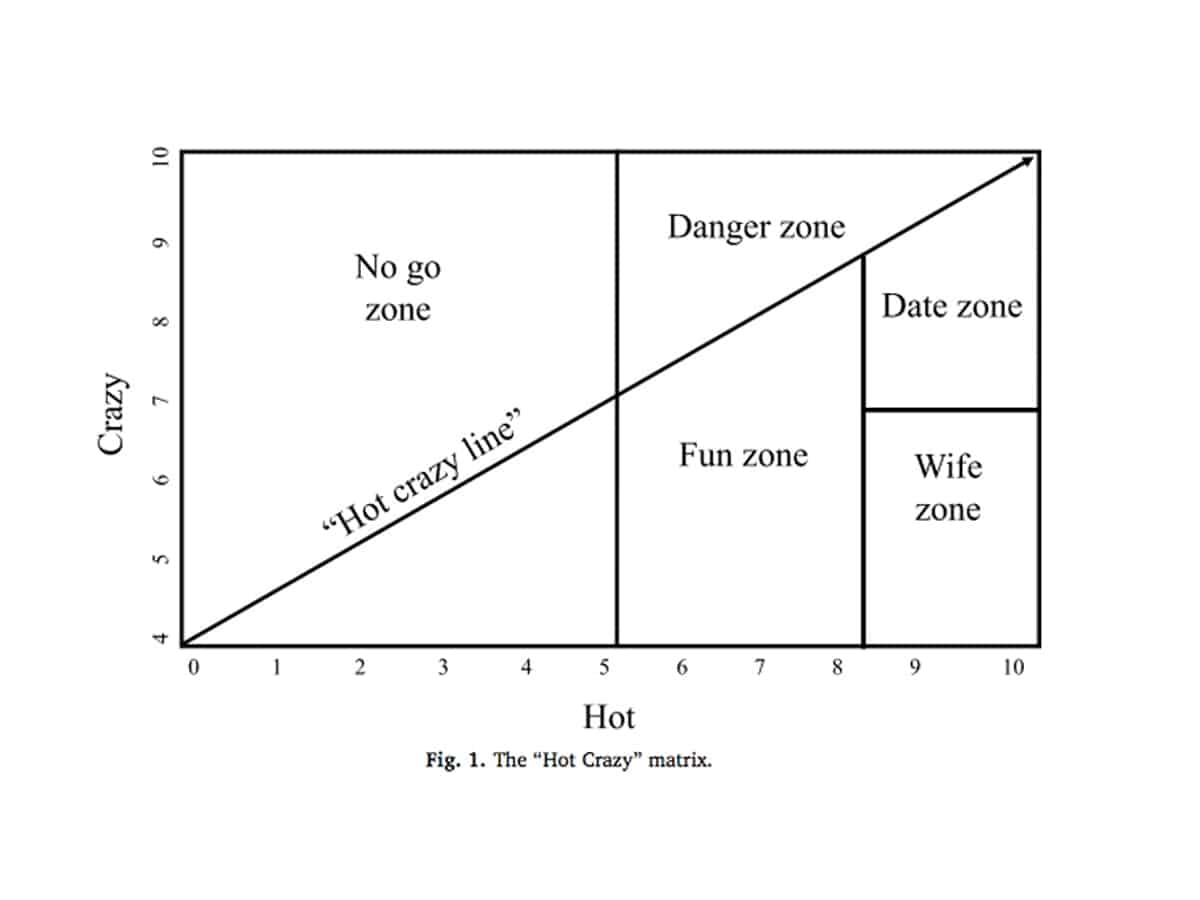
Published: Last Updated:
Readtime: 3 min
Every product is carefully selected by our editors and experts. If you buy from a link, we may earn a commission. Learn more. For more information on how we test products, click here.
This isn’t some dating phenomenon anymore; this is real science. The crazy hot scale exists, and it is influenced by our personality traits – specifically, those that make us appear more exciting – provided, of course, that you are physically appealing. Examining two different studies, researchers have determined that borderline personality traits in attractive women and wealthy, low-attractive men are relatively favoured by the opposite sex.
Results published in March this year show that women are more astute in mate preference, while men often engage in “potentially turbulent relationships.” Unlike the opposite sex, women are better at “avoiding troublesome or financially challenged men who are time and economically costly”.
You’ll also like:
Men Will Lie to Get Laid, Says Study

Taking a look at how the vulnerable dark triad traits of borderline personality disorder (BPD) and secondary psychopathy function affect relationships, men were more willing to engage in relationships with attractive women high in BPD traits. In contrast, women compensated low attractiveness for wealth in long-term dating. On top of that, women did not desire secondary psychopathy in any relationship.
Individuals that may be alluring as a result of being “interpersonally tempestuous,” can only offer a thrilling relationship for the short term. The catch – you have to be physically appealing too.
The research was inspired by a persistent cultural phenomenon, one often crudely simplified into internet memes. You may have encountered the ‘hot-crazy matrix,’ a concept that attempts to graph dating options for men by plotting a woman’s attractiveness against her perceived emotional volatility. A parallel concept, the ‘cute-money matrix,’ is sometimes used to evaluate a man’s desirability based on his own attractiveness and financial resources.
From an evolutionary psychology perspective, these ideas have a certain intuitive appeal, tapping into the theory that “men should prioritise attractiveness and women, wealth.” It’s this mainstream intuition about partner preferences that makes these concepts so sticky.
Now, new research “reliably supports such intuitions,” confirming that “prospective partners are indeed rated according to attractiveness, personality and resources differently according to sex.”
So, what’s the real takeaway? Far from the cynical advice to just “hit the stock market rather than the gym,” this research actually reinforces the value of a holistic approach. It confirms that attractiveness (fitness), resources (career), and personality are all key parts of the equation. For the modern man, it’s not an either/or choice; it’s a case for developing yourself across every area.
“Hot-Crazy Scale” FAQ’s
Yes, recent scientific research suggests there is a real basis for the concept. Studies found that men are significantly more willing to engage in relationships with physically attractive women who also show borderline personality (BPD) traits, which are often perceived as “exciting” or “tempestuous.” This allure, however, is heavily dependent on the woman being physically attractive first.
The “Hot-Crazy Matrix” is a widespread internet phenomenon and cultural concept, often used as a ‘guide’ for men. It attempts to graph dating options by plotting a woman’s physical attractiveness (“hot”) against her perceived emotional volatility (“crazy”). This mainstream idea directly inspired the new scientific research.
The “Cute-Money Matrix” is the parallel concept for women, suggesting they evaluate a man’s desirability based on his physical attractiveness (“cute”) and his financial resources (“money”). The research supported this, finding that women were more willing to “compensate low attractiveness for wealth” in a partner, especially for long-term dating.


































Comments
We love hearing from you. or to leave a comment.